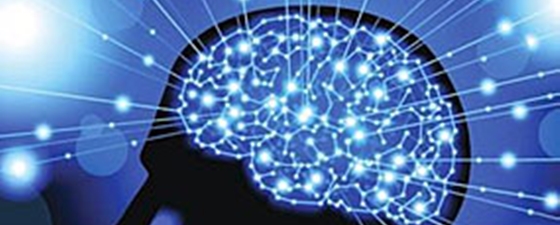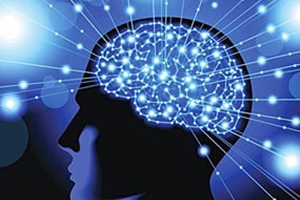David Brin wrote this open letter to scientists 15 years ago but it may be more relevant now than ever. "Addicted to Self-Righteousness?" suggests that the internal chemical processes that underlie substance addictions are themselves addictive. Thus, emotional states like rage and self-righteousness, and activities such as trading stocks and gambling, may be as powerfully addictive as nicotine and cocaine via similar physiological mechanisms. Accordingly, research in this area provides a deeper understanding of today's societal divisions. ~ Ilene
Addicted to Self-Righteousness?
Courtesy of David Brin, Contrary Brin Blog
An Open Letter to Researchers In the Fields of Addiction, Brain Chemistry, and Social Psychology — and anyone else who will listen.

Please forgive this open letter, offering suggestions in a field outside my own. I'm no biologist, physician or chemist. Still, my background — usefully exploring a wide range of scientific issues — may make this seem less impudent. (I have written New York Times best-selling fiction and nonfiction best-selling books including The Transparent Society and The Postman.) Will you indulge a query that may prove pertinent to your work?
For years I've followed advances that investigate reinforcement processes in the human brain, especially those involving dopamine and other messenger chemicals that are active in mediating pleasure response. One might call this topic chemically-mediated states of arousal that self-reinforce patterns of behavior.
 Of course, what this boils down to — at one level — is addiction. But not only in the sense of illegal drug abuse. In very general terms, "addiction" may include desirable things, like bonding with our children and "getting high on life." These good patterns share with drug addiction the property of being reinforced by repeated chemical stimulus, inside the brain.
Of course, what this boils down to — at one level — is addiction. But not only in the sense of illegal drug abuse. In very general terms, "addiction" may include desirable things, like bonding with our children and "getting high on life." These good patterns share with drug addiction the property of being reinforced by repeated chemical stimulus, inside the brain.
Now, certainly, knowing that life's wholesome pleasures are chemically reinforced doesn't make love any less sincere, a sunset less beautiful, or even faith in God any less sincere. Indeed, generalizing our study of auto-reinforcement may help us understand how wholesome pleasure works… and perhaps how better to choose which behaviors get reinforced.
Please bear with me. This line of reasoning is going somewhere important. So important that it may bear upon some of society's most pressing problems.
generalizing the word "addiction"
I have long admired those who keep advancing the science of addiction, often uphill against the oversimplifying puritanism of a stale "Drug War"… or else having to overcome naïve platitudes at the other end of the political spectrum. Some of the august workers who spared time to talk to me about this topic have included Hans Breiter, Rich Wilcox, Stanley Glick, Jonathan D. Cohen, Alan I. Leshner, Gregory Berns, Dan Ariely, Steven Grant, and Seth Boatwright-Horowitz.
Like the hot topic of Global Warming, this one draws so much political heat that it's a wonder anything can get done at all. And yet, here I am, offering brazen suggestions.
Indeed, I believe the field of addiction may be myopically missing a substantial area of potential research. This area concerns volitionally or habitually self-stimulated secretion — or, putting it rather crudely, "self-doping."
In other words, the power that individuals have to trigger the release of psychoactive chemicals simply by entering into certain types of consciousness.
I am not talking about mysticism or New Age states of awareness. True, some workers have measured neurochemical effects of meditation and other eastern arts. But this ignores a great many other pleasurable, or semi-pleasurable mental states that require considerably less discipline to access than the meditative plateau. States that are accessible to nearly everyone, every day.
 Of course, this overall effect has been known ever since William James wrote Varieties of Religious Experience. But I'd like to suggest strong reasons to study autonomous self-stimulation along new directions that are tangentially related to those already being pursued. For one thing, new research trends — of which you are a part — seem to offer potential hope for getting out of the horrible Drug War.
Of course, this overall effect has been known ever since William James wrote Varieties of Religious Experience. But I'd like to suggest strong reasons to study autonomous self-stimulation along new directions that are tangentially related to those already being pursued. For one thing, new research trends — of which you are a part — seem to offer potential hope for getting out of the horrible Drug War.
Suppose that, instead of preaching to substance abusers that they should "get high on life," we could actually train them in self-triggered endorphin/dopamine-releasing methods? Methods the rest of us learn unconsciously in childhood. Better addictions that do not suffer from receptor down-regulating and other problems, such as depression or insatiability.
Beyond obvious implications re: substance abuse, there is another aspect of such research that might benefit society.
progress in studying "self-addiction"
Of course we know that individuals who are addicted to psychoactive chemicals can often wind up behaving in socially harmful ways while in pursuit of their high. But what of many other compulsively harmful behaviors we see practiced around us. Might some of them have similar roots? What if many irrationally harmful — even self-defeating — actions arise from individuals seeking to trigger a self-doped pleasure response?
(It has been said that "insanity is doing the same thing, over and over, while expecting different results." Doesn't that sound like addiction?)
Consider studies of gambling. Researchers led by Dr. Hans Breiter of Massachusetts General Hospital examined with functional magnetic resonance imaging (fMRI) which brain regions activate when volunteers won games of chance — regions that overlapped with those responding to cocaine!
"Gambling produces a similar pattern of activity to cocaine in an addict," according to Breiter.
Moving along the spectrum toward activity that we consider more "normal" — neuroscientists at Harvard have found a striking similarity between the brain-states of people trying to predict financial rewards (e.g., via the stock market) and the brains of cocaine and morphine users.
Along similar lines, researchers at Emory University monitored brain activity while asking staunch party members, from both left and right, to evaluate information that threatened their preferred candidate prior to the 2004 Presidential election. "We did not see any increased activation of the parts of the brain normally engaged during reasoning," said Drew Westen, Emory's director of clinical psychology. "Instead, a network of emotion circuits lit up… reaching biased conclusions by ignoring information that could not rationally be discounted. Significantly, activity spiked in circuits involved in reward, similar to what addicts experience when they get a fix," Westen explained.
How far can this spectrum be extended? All the way into realms of behavior — and mental states — that we label as wholesome? Rich Wilcox of the University of Texas says: "Recovery process in addiction is based to a great extent on cognitively mediated changes in brain chemistry of the frontal/prefrontal cortex system. Furthermore… there is even a surprising amount of literature cited in PubMed suggesting that prayer also induces substantial changes in brain chemistry."
Clearly this spectrum of "addiction" includes reinforcement of behaviors that are utterly beneficial and that have important value to us, e.g., love of our children. I get a jolt every time I smell my kids' hair, for instance. The "Aw!" that many people give when then see a baby smile is accompanied by skin flushes and iris dilation, reflecting physiological pleasure. Similar jolts come to people (variously) from music, sex, exercise and the application of skill.
Although a lot of recent research has danced along the edges of this area, I find that the core topic appears to have been rather neglected. I'm talking about the way that countless millions of humans either habitually or volitionally pursue druglike reinforcement cycles — either for pleasure or through cycles of withdrawal and insatiability that mimic addiction — purely as a function of entering an addictive frame of mind.
For a majority, indeed, this process goes un-noticed because there is no pathology! Reiterating; it is simply "getting high on life." Happy or at least content people who lead decent lives partake in these wholesome addictive cycles that have escaped much attention from researchers simply because these cycles operate at the highest levels of human functionality. (It is easy to verify that there is something true underlying the phrase "addicted to love.")
This wholesomeness should no longer mask or exclude such powerfully effective mental states from scientific scrutiny. For example, we might learn more about the role of oxytocin in preventing the down-regulating or tolerance effects that exacerbate drug addiction. Does this moderating effect provide the more wholesome, internally-generated "addictions" with their long-lasting power?
Even more attractive would be to shine light on patterns of volitional or habitual addictive mentation that are NOT helpful or functional or desirable.
Gambling has already been mentioned. Rage is obviously another of these harmful patterns, that clearly have a chemical-reinforcement component. Many angry people report deriving addictive pleasure from fury, and this is one reason why they return to the state, again and again. Thrill-seeking can also be like this, when it follows a pathology of down-regulating satiability. Ernst Fehr, Brian Knutson, and John Hibbing have written about the pleasure-reinforcement of revenge, that Hollywood films tap incessantly in plot lines that give audiences a vicarious thrill of Payback against villains-who-deserve-it.
the most common (but unstudied) form of self-addiction
 So far, we are on ground that is supported by copious (if peripheral) research. If nothing else, at least there should be an effort to step back and notice the forest, for the trees, generalizing a view of this whole field as we've described so far. A general paradigm of self-reinforcement.
So far, we are on ground that is supported by copious (if peripheral) research. If nothing else, at least there should be an effort to step back and notice the forest, for the trees, generalizing a view of this whole field as we've described so far. A general paradigm of self-reinforcement.
Only now, taking this into especially important new territory, please consider something more specific. A phenomenon that both illustrates the general point and demands attention on its own account.
I want to zoom down to a particular emotional and psychological pathology. The phenomenon known as self-righteous indignation.
We all know self-righteous people. (And, if we are honest, many of us will admit having wallowed in this state ourselves, either occasionally or in frequent rhythm.) It is a familiar and rather normal human condition, supported — even promulgated — by messages in mass media.
While there are many drawbacks, self-righteousness can also be heady, seductive, and even… well… addictive. Any truly honest person will admit that the state feels good. The pleasure of knowing, with subjective certainty, that you are right and your opponents are deeply, despicably wrong.
Sanctimony, or a sense of righteous outrage, can feel so intense and delicious that many people actively seek to return to it, again and again. Moreover, as Westin et.al. have found, this trait crosses all boundaries of ideology. (I discuss this general effect in The Transparent Society.)
Indeed, one could look at our present-day political landscape and argue that a relentless addiction to indignation may be one of the chief drivers of obstinate dogmatism and an inability to negotiate pragmatic solutions to a myriad modern problems. It may be the ultimate propellant behind the current "culture war."
If there is any underlying truth to such an assertion, then acquiring a deeper understanding of this one issue may help our civilization deal with countless others.
a set of core questions:
I know that I have taken up a lot of your time, so let me boil this down to a key set of questions. Not only for researchers in addiction and psychologically-active brain chemistry, but anyone else interested in the topic.
Do you perceive — as I do — a gap in addiction-related research, where it comes to studying cycles of reinforcement that take place ENTIRELY within the brain, without external stimulation?
Might studying the most wholesome cycles of "addictive" reinforcement — such as love, music, or skill — result in a redefinition of "addiction" as a natural human process, that is only hijacked by substitutes (e.g., drugs or rage) when better forms of auto-reinforcement are not learned in youth?
Would such a redefinition have positive social effects, bringing more realistic expectations and strategies to the "Drug War?"
If the entire spectrum of auto-reinforcing states of mind were laid bare, might this help us to offer therapies for some (e.g., rage) and better/easier access to others (e.g., love or focused skill)?
Might it be worthwhile to demonstrate that INDIGNATION is a clinically measurable physiological state, reinforced in some by the semi-volitional or habitual release of psychologically active chemicals in the brain?
If we could show clearly, publicly, and decisively that self-righteousness is an addiction, might this help empower moderates in every political movement, so that negotiation and pragmatism would become more fashionable than dogmatic purity and outrage?
Of course, I can't resolve any of these questions myself. How could I, as a mere astrophysicist, futurist and sci fi writer?
But then, I am paid to ask questions. It is much harder to come up with answers.
difficulties
I won't pretend there are no obstacles to pursuing this line of inquiry. Having discussed it with neuroscientists such as William Calvin, Robert Malenka, Joseph Miller, Read Montague, Stanley Glick, Gregory S. Berns and Ernest Noble, I am familiar with reasons why researchers have shied away from studying internal stimulation in favor of external stimulations like gambling and drugs.
According to Joe Miller:
"There are incredible problems with any sort of research which seeks to quantify a mental state. It is orders of magnitude more difficult to study internal stimuli than external stimuli. Subjects lie, often without any real consciousness of the act. And mental states can change more rapidly than relatively slow procedures like MRI can hope to capture. And subjects are highly distractible."
Miller continues:
"Having said that, there is ongoing work along the lines you suggest, although it seems to be more directed at gambling, drug addictive states, internal religious states etc. One way to approach this is to have the subject engage in some behavior which naturally requires the mental state you are trying to study, e.g., simulated slot machines for studying the gambling response etc…. I can imagine having a right winger read pronouncements of UN rep, Ambassador Bolton — (or Hillary Clinton?) — and see what brain changes are observable. I'm sure the "usual suspects" would be involved, e.g., ventral striatum, aka nucleus accumbens."
Well, in fact, this is exactly the sort of idea pondering and brain-storming that I've sought to get started. (In fact, Dr. Miller and others at USC have recently begun exploring avenues of research inspired by this letter.)
 Putting aside specific politics, one could offer a dozen suggestions for how blind — or double blind — experiments might be performed. (Subjects might name their own emblems of outrage, for example, choosing in advance the symbols and people most likely to trigger their own indignation.) Experiments could at least narrow down the range and subjectivity of studying self-induced mental states. After all, we would not (at first) be seeking to "cure" anybody. Only to get a better handle on how these cycles work.
Putting aside specific politics, one could offer a dozen suggestions for how blind — or double blind — experiments might be performed. (Subjects might name their own emblems of outrage, for example, choosing in advance the symbols and people most likely to trigger their own indignation.) Experiments could at least narrow down the range and subjectivity of studying self-induced mental states. After all, we would not (at first) be seeking to "cure" anybody. Only to get a better handle on how these cycles work.
For example; might indignation exhibit different patterns of trigger-response, latency, persistence and recovery in an "addict" than in people who are merely "righteous" on occasion? In much the same way that a stiff drink has measurably different effects upon a social drinker than an alcoholic?
Suppose the expected, post-stimulation high is blocked by chemical inhibitors. Might "indignation addicts" show a very different set of behaviors — when the expected high is inhibited — than a merely righteous person will display, even if they agree about the triggering dogma or image? Among drug addicts and alcoholics, such differences and signs are explicit, measurable and unsubjective.
Would not some good come simply from demonstrating such patterns, thereby showing that indignation is a pernicious addictive habit?
A soft result, but one with potentially vast social effects.
why the issue has grown urgent
We have entered an era of rising ideological division and a "culture war" that increasingly stymies our knack at problem-solving. Nowadays, few adversarial groups seem capable of negotiating peaceful consensus solutions to problems, especially with opponents that are perceived as even more unreasonably dogmatic than they are. This cycle is often driven by the irate stubbornness of a few vigorous leaders. After all, the indignant have both stamina and dedication, helping them take high positions in advocacy organizations, from Left to Right.
Might recent exaggerated levels of bilious social division be partly attributed to an all-too human tendency to fall into addictive patterns of self-doping, by wallowing in a pleasurable mental state? A state that undermines our ability to empathize with opponents, accept criticism, or negotiate practical solutions to problems?
May I boldly suggest that this insidious type of reinforcement may cause vastly more overall social harm than every illegal drug on the street?
At risk of growing repetitious, suppose it were openly demonstrated that the self-righteous mental state is reinforced chemically by hijacking internal "addiction" mechanisms. Given enough publicity, might such a finding help empower pragmatists and moderates of all kinds?
Certainly some will oppose such research, calling it improper interference by science into political realms that are best left to individual subjectivity.
Too late. Already, serious effort has been devoted into studying political inclinations with functional magnetic resonance imaging, or fMRI. (See afterword, below.) Ideologues across the spectrum are studying methods of "mind control." Obviously, this is an area that will receive ever greater attention in coming years, like it or not.
At least the aim here is to lessen the influence of dogmatism and empower those in society who are inclined toward calm and judgement.
conclusion: can science rescue us from dogmatism?
I have for some years written to researchers in related fields, asking about ways to study abuse of natural reinforcement processes. It would seem the addictive properties of rage and self-righteousness could be either proved or disproved, rather easily. (And yes, of course, I might be wrong!)
A number of researchers have kindly given me time. Some offered enthusiastic encouragement.
But then, alas, year after year passed and nothing happened. Except a relentless increase in irrationally indignant behavior, everywhere in society and across all political spectra.
Hence, my decision to post this as an open letter online.
Perhaps someone will do what I lack time to do: Set up an active discussion group to probe these possibilities, with participation by both experts and gifted outsiders, until we know how much is right, how much is wrong, and how much work there is to be done. Whether this is a promising line of enquiry… or a dead end.
If so, I hope I will be invited to participate. Happy to observe while the real experts make joyful use of their high skills.
That's it. Thanks for your patience with a meddlesome and presumptuous amateur.
Here's wishing you fresh insights and much success,
David Brin

afterword
The following articles are just a few of hundreds that cast light on aspects of this problem, or ways that new research might prove fruitful. Alas, as yet, nobody seems to be putting the pieces together.
-
Brain Scans May Unlock Candidates' Appeal (LiveScience.com, 29 October 2004) Drs. Joshua Freedman and Marco Iacoboni of the University of California at Los Angeles finished scanning the brains of 10 Republicans and 10 Democrats. Each viewed images of President Bush, John Kerry and Ralph Nader. When viewing their favorite candidate, all showed increased activity in the region implicated in empathy. And when viewing the opposition, all had increased blood flow in the region where humans consciously assert control over emotions — suggesting the volunteers were actively attempting to dislike the opposition.
-
Heroin Addiction Gene Identified and Blocked (NewScientist.com, 31 May 2005) Scientists have identified acritical gene (AGS3 in the nucleus accumbens in the brain) involved in heroin addiction relapse in rats and successfully blocked it, eliminating cravings for the drug. A related treatment could become available to humans within the next couple of years.
-
13 Things That Do Not Make Sense (NewScientist.com, 16 March 2005) Specifically, the Placebo Effect in Addiction Inhibition. DON'T try this at home. Several times a day, for several days, you induce pain in someone. You control the pain with morphine until the final day of the experiment, when you replace the morphine with saline solution. Guess what? The saline takes the pain away.
This is the placebo effect: somehow, sometimes, a whole lot of nothing can be very powerful. Except it's not quite nothing. When Fabrizio Benedetti of the University of Turin in Italy carried out the above experiment, he added a final twist by adding naloxone, a drug that blocks the effects of morphine, to the saline. The shocking result? The pain-relieving power of saline solution disappeared.
So what is going on? Doctors have known about the placebo effect for decades, and the naloxone result seems to show that the placebo effect is somehow biochemical. But apart from that, we simply don't know.
-
Study links marijuana buzz to 'runner's high' (CNN.com, Jan 11, 2004) The same family of chemicals that produces a buzz in marijuana smokers may be responsible for "runner's high," the euphoric feeling that some people get when they exercise, U.S. researchers say. High levels of anandamide were found in young men who ran or cycled at a moderate rate for about an hour, according to a study made public this week by the Georgia Institute of Technology and the University of California, Irvine.
Anandamide is a cannabinoid, or lipid molecule, that is naturally produced in the body. It is known to produce sensations that are similar to those of THC, the psychoactive property in marijuana. The study's findings, which were recently published in the journal NeuroReport, fly in the face of those who believe that the release of brain chemicals called endorphins cause the peculiar high that some runners and cyclists claim to feel. Arne Dietrich, the study's principal investigator and a former visiting professor at Georgia Tech in Atlanta, believes the body releases cannabinoids to help it cope with the prolonged stress and pain of moderate or intense exercise.
-
Reward mechanism involved in addiction likely regulates pair bonds between monogamous animals (Journal of Comparative Neurology, 20 January 2004) The reward mechanism involved in addiction appears to regulate lifelong social or pair bonds between monogamous mating animals, according to a Center for Behavioral Neuroscience (CBN) study of prairie voles published in the January 19 edition of the Journal of Comparative Neurology. The finding could have implications for understanding the basis of romantic love and disorders of the ability to form social attachoments, such as autism and schizophrenia.
In their research, funded by the National Institute of Mental Health, Larry Young, PhD., associate professor of psychiatry and behavioral sciences at Emory University School of Medicine and an affiliate scientist at Yerkes National Primate Research Center; graduate student Miranda Lim; and Anne Murphy, PhD., associate professor of biology at Georgia State University, examined the distribution of two brain receptors in the ventral forebrain of monogamous prairie voles that have been previously tied to pair bond formation: oxytocin (OTR) and vasopressin V1a receptor (V1aR). Using receptor audiographic techniques, the scientists found that these receptors are confined to two of the brain's reward centers, the nucleus accumbens and the ventral pallidum. V1aR receptors, which are thought to be activated in the male vole brain during pair bond formation, were confined largely to the ventral pallidum. OTR receptors, which play a crucial role in pair bond formation in females, were found mainly in the nucleus accumbens.
-
Brain scan can tell scientists what subject is seeing (4/2005) By peering not into the eyes but into the brain, an improved scanning technique has enabled scientists to figure out what people are looking at — even, in some cases, when they are not yet aware of what they have seen. The advance, to be reported today, shows that the scanners may be better able than previously supposed to probe the border between conscious and unconscious thought and even, in certain circumstances, to read people's state of mind. The scanning technique is a more powerful version of functional magnetic resonance imaging, already widely used in hospitals. It can show which regions of the brain are actively performing some task, but until now has lacked the resolution to track specific groups of neurons, as the functional units of the brain are called. The improvement lies not in the scanners themselves, but in a new analytic technique developed by Dr. Frank Tong, a psychologist at Vanderbilt University. In today's issue of the journal Nature Neuroscience, he and a colleague, Dr. Yukiyasu Kamitani, report that with the scanner they were able to distinguish the orientation of a test pattern of lines being observed by their subjects."
-
 Monkeys Show Sense of Fairness (National Geographic, 17 September 2003) Researchers studying brown capuchin monkeys (Cebus apella) have found that the highly social, cooperative species native to South America show a sense of fairness, the first time such behavior has been documented in a species other than humans.
Monkeys Show Sense of Fairness (National Geographic, 17 September 2003) Researchers studying brown capuchin monkeys (Cebus apella) have found that the highly social, cooperative species native to South America show a sense of fairness, the first time such behavior has been documented in a species other than humans.
THE END
Also: Watch a talk by David on “The addictive plague of getting mad as hell" Indignation, addiction and hope — does it help to be "mad as hell?", TEDx UCSD, 2014.
Image Credits
Sunset by Public Co from Pixabay
Meditation by Shahariar Lenin from Pixabay
AI Monitoring by sujin soman from Pixabay
Monkey by Peter Fischer from Pixabay



